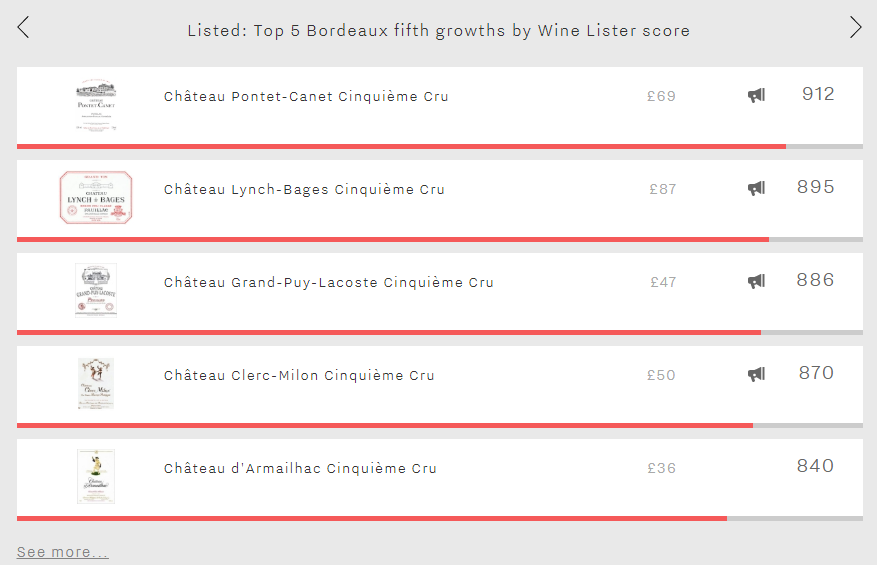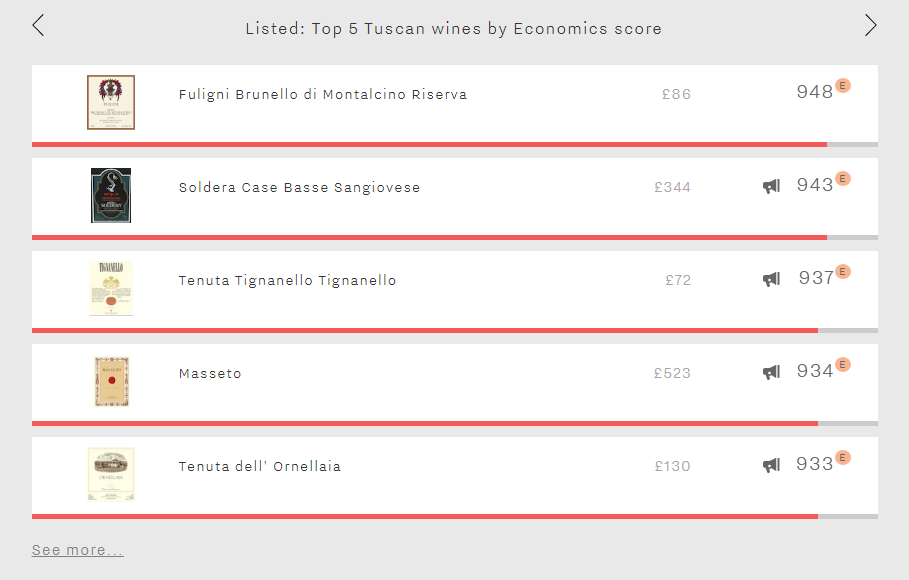Flying fifths: in a class of their own
The 1855 Bordeaux classification might well be considered one of the earliest examples of a wine rating system. Classifying wines by six categories – including “unclassified” – might seem restrictive now (compared to Wine Lister’s 1,000 point scale), but the classification has proven to be highly influential and durable. This week’s Listed section focuses on the five Bordeaux fifth growths with the highest overall Wine Lister score, giving us an opportunity to see how the 160-year-old classification stacks up today.

Whilst the 1855 classification used price as the yardstick by which a wine should be rated, Wine Lister’s holistic approach also takes into account quality, brand strength, and other economic metrics. The outcome is that with an average Wine Lister score of 881, these flying fifths outperform both the top five performing third growths and fourth growths (average of 863 and 834 respectively), beating the two classes across every category. Nonetheless, the top fifth growths trail the most highly-rated second growths and the five first growths by 48 and 86 points respectively overall.
Pontet-Canet is the leading fifth growth, with a score of 912. While all five wines perform well in terms of Brand score, Pontet-Canet’s first place position is supported by an excellent Quality score of 905, nearly 60 points above Grand-Puy-Lacoste, the second highest rated of the five in terms of quality.
Lynch-Bages comes next. Whilst it performs well in the Quality and Economics categories, it is in the Brand category that it comes into its own, with a near-perfect score of 998 putting it alongside first growths Haut-Brion and Margaux.
Grand-Puy-Lacoste takes third place with 886, scoring well across the board. It is one of the four Buzz Brands of the group, a fact which confirms that these top fifth growths currently confer more prestige than their third and fourth growth counterparts, which see fewer Buzz Brands within their respective top fives.
The last two spots are filled by wines from the Baron Philippe de Rothschild stable – Clerc-Milon and d’Armailhac. The former achieves the highest Economics score of the group – 908 – thanks to excellent price performance over both the long and short-term. Meanwhile, d’Armailhac’s score of 840, whilst 30 points below Clerc-Milon, puts it above all but four third and fourth growths.
These results blur the lines between the traditional classifications, demonstrating that price can no longer be looked at in isolation, and suggesting that a more nuanced and flexible approach needs to be taken in rating wines.
Remember that there are many ways to search Wine Lister, including by score, geography, and classification – which is how we calculated the findings above.
